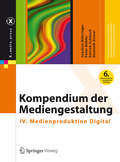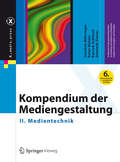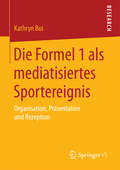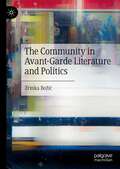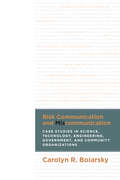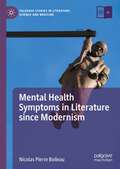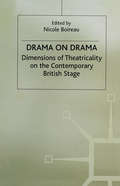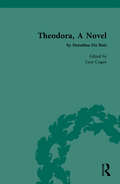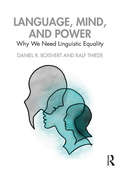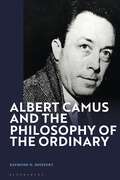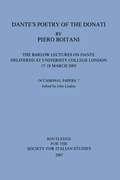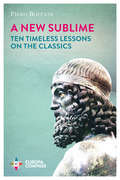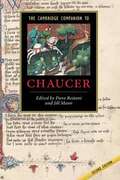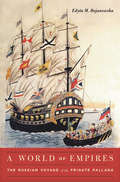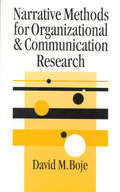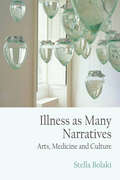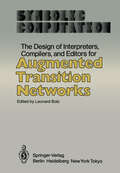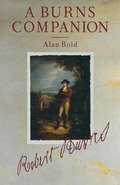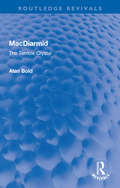- Table View
- List View
Kompendium der Mediengestaltung: IV. Medienproduktion Digital (X.media.press)
by Joachim Böhringer Peter Bühler Patrick Schlaich Dominik SinnerDie sechste Auflage dieses Standardwerks wurde vollständig überarbeitet und deutlich erweitert. Der gestiegene Umfang des Werkes machte eine Aufteilung in vier Bände erforderlich. Die anderen Bände: • I. Konzeption und Gestaltung (ISBN 978-3-642-54580-1)• II. Medientechnik (ISBN 978-3-642-54584-9)• III. Medienproduktion Print (ISBN 978-3-642-54578-8)Das Kompendium berücksichtigt die Rahmenpläne und Studienordnungen sowie die Prüfungsanforderungen der Ausbildungs- und Studiengänge. Es eignet sich als Lehr- und Arbeitsbuch in Schule, Fachschule, Hochschule und Universität sowie zum Selbststudium. Über 1200 prüfungsrelevante und praxisorientierte Aufgaben und Lösungen vertiefen das Verständnis des Lehrstoffs. Farbige Querverweise ermöglichen das schnelle Auffinden der entsprechenden Kapitel in den Bänden. Ein gemeinsames Stichwortverzeichnis erleichtert die Suche und den Zugriff auf die Inhalte der vier Bände.
Kompendium der Mediengestaltung: II. Medientechnik (X.media.press)
by Joachim Böhringer Peter Bühler Patrick Schlaich Dominik SinnerDie sechste Auflage dieses Standardwerks wurde vollständig überarbeitet und deutlich erweitert. Der gestiegene Umfang des Werkes machte eine Aufteilung in vier Bände erforderlich. Die anderen Bände: • I. Konzeption und Gestaltung (ISBN 978-3-642-54580-1) • III. Medienproduktion Print (ISBN 978-3-642-54578-8)• IV. Medienproduktion Digital (ISBN 978-3-642-54582-5)Das Kompendium berücksichtigt die Rahmenpläne und Studienordnungen sowie die Prüfungsanforderungen der Ausbildungs- und Studiengänge. Es eignet sich als Lehr- und Arbeitsbuch in Schule, Fachschule, Hochschule und Universität sowie zum Selbststudium. Über 1200 prüfungsrelevante und praxisorientierte Aufgaben und Lösungen vertiefen das Verständnis des Lehrstoffs. Farbige Querverweise ermöglichen das schnelle Auffinden der entsprechenden Kapitel in den Bänden. Ein gemeinsames Stichwortverzeichnis erleichtert die Suche und den Zugriff auf die Inhalte der vier Bände.
Die Formel 1 als mediatisiertes Sportereignis: Organisation, Präsentation und Rezeption
by Kathryn BoiKathryn Boi ermittelt ein komplett neues Verfahren zur Dokumentation und Codierung der visuellen Elemente von Fernsehbildern. Dabei betrachtet die Autorin 23 Liveübertragungen der Formel 1 und liefert ein umfangreiches Audio- und Videotranskript im Bereich der Sportberichterstattung. Hier sind neben den verbalen Aussagen der Kommentatoren sekundengenau sämtliche Kamerawechsel, Zeitlupen, Einblendungen und Sonderbildformen festgehalten. Aber auch alle während eines Rennens auftretenden unvorhersehbaren Ereignisse, wie z. B. Unfälle und Überholmanöver, werden so aufgezeichnet. Außerdem betrachtet die Autorin den Inszenierungscharakter der Formel 1 und belegt, dass bei der mediengerechten Aufbereitung im deutschen Fernsehen der Fokus auf den heimischen Fahrern liegt und Sättigungseffekte zu einer kontinuierlichen Verbesserung der Übertragungstechniken führen.
The Community in Avant-Garde Literature and Politics
by Zrinka BožićThis book rethinks the concept of community taking Jean-Luc Nancy’s influential essay “La communauté désoeuvrée” as its starting point, tracing subsequent scholarship on community and adding new insights on avant-garde aesthetics and politics. Extensively exploring the communitarian dimension of avant-garde aesthetics and politics (focusing on artistic groups, intellectual circles and theoretical collectives), the author aims to bring literature and art into a philosophical examination of the paradoxical and complex idea of community.
Risk Communication and Miscommunication: Case Studies in Science, Technology, Engineering, Government, and Community Organizations
by Carolyn BoiarskyEffective communication can help prevent or minimize damage from environmental disasters. In Risk Communication and Miscommunication, Carolyn Boiarsky teaches students, technical writers, public affairs officers, engineers, scientists, and governmental officials the writing and communication skills necessary for dealing with environmental and technological problems that could lead to major crises. Drawing from research in rhetoric, linguistics, technical communication, educational psychology, and web design, Boiarsky provides a new way to look at risk communication. She shows how failing to consider the readers’ needs and the rhetorical context in which a document is read can be catastrophic and how anticipating those needs can enhance effectiveness and prevent disaster. She examines the communications and miscommunications of original e-mails, memos, and presentations about various environmental disasters, including the Columbia space shuttle breakup and the BP/Deepwater Horizon oil rig explosion, and successes, such as the Enbridge pipeline expansion and the opening of the Mississippi Spillway, offering recommendations for effective communication. Taking into account the growing need to communicate complex and often controversial issues across vast geographic and cultural spaces with an ever-expanding array of electronic media, Risk Communication and Miscommunication provides strategies for clear communication of data, ideas, and procedures to varied audiences to prevent or minimize damage from environmental incidents.
Mental Health Symptoms in Literature since Modernism (Palgrave Studies in Literature, Science and Medicine)
by Nicolas Pierre BoileauMental Health Symptoms in Literature since Modernism looks at various ways of treating symptoms of psychological disorders in the literature of the long twentieth century. This book shows that literature can, in its questioning of commonly accepted views of this lived experience of psychic symptoms, help engender new theories about the functioning of subjective cases. Modernism emerged at about the same time as Freudian psychoanalysis did and the aim of this book is to also show that to a certain extent, Woolf preceded Freud in her exploration of the symptom and contributed to fashioning another approach that is now more common, especially in writers from the 1990s-onwards.
Drama on Drama: Dimensions of Theatricality on the Contemporary British Stage
by Nicole BoireauThis book gives an in-depth and invigorating analysis of reflexivity in recent British drama - the way drama comments on drama. The interplay of dramatic forms, the cross-fertilization of historical traditions are explored in relation to major contemporary authors and theatrical practices. When drama takes itself as its own object of study it paradoxically highlights the most vital issues of its time. Key questions are raised about the nature of theatricality in play-writing and performance in this the first full-length treatment of the subject.
Theodora, A Novel: by Dorothea Du Bois (Chawton House Library: Women's Novels)
by Dorothea Du BoisTheodora, A Novel by Dorothea Du Bois, published in 1770, is an entertaining and frequently shocking tale of a young woman’s efforts to regain her position in high society after her aristocratic father’s abandonment of and denial of marriage to her mother. The two-volume work is a thinly-veiled fictionalisation of Du Bois’s eventful personal history and the novel represents just one prong of what was a very public campaign to assert what she believed was her rightful place among the nobility of Ireland and Britain. Central to the narrative of Theodora is the powerlessness of women in the face of a system, moral, social and legal, that was designed to enshrine and protect patriarchal interests. In this manner Theodora exposes the gross injustices of eighteenth century society. This scholarly edition of Du Bois’s novel introduces readers to a unique voice in women’s writing of the eighteenth century that has been undeservedly dismissed by literary history for far too long.
Language, Mind, and Power: Why We Need Linguistic Equality
by Daniel R. Boisvert Ralf ThiedeLanguage is a natural resource: Power and vulnerability are associated with access to language, just as to food and water. In this new book, a linguist and philosopher elucidate why language is so powerful, illuminate its very real social and political implications, and make the case for linguistic equality—equality among languages and equality in access to/knowledge of language and its use—as a human right and tool to prevent violence and oppression. Students and instructors will find this accessible, interdisciplinary text invaluable for courses that explore how language reflects power structures in linguistics, philosophy/ethics, and cognitive science/psychology.
Language, Mind, and Power: Why We Need Linguistic Equality
by Daniel R. Boisvert Ralf ThiedeLanguage is a natural resource: Power and vulnerability are associated with access to language, just as to food and water. In this new book, a linguist and philosopher elucidate why language is so powerful, illuminate its very real social and political implications, and make the case for linguistic equality—equality among languages and equality in access to/knowledge of language and its use—as a human right and tool to prevent violence and oppression. Students and instructors will find this accessible, interdisciplinary text invaluable for courses that explore how language reflects power structures in linguistics, philosophy/ethics, and cognitive science/psychology.
Albert Camus and the Philosophy of the Ordinary
by Raymond D. BoisvertThe standard interpretation keeps repeating that Camus is the prototypical “absurdist” thinker. Such a reading freezes Camus at the stage at which he wrote The Stranger and The Myth of Sisyphus. By taking seriously how (1) Camus was always searching and (2) the rest of his corpus, Albert Camus and the Philosophy of the Ordinary corrects the one-sided, and thus faulty, depiction of Camus as committed to a philosophy of absurdism. His guiding project, which he explicitly acknowledged, was an attempt to get beyond nihilism, the general dismissal of value and meaning in ordinary life. Tracing this project via Camus's works, Albert Camus and the Philosophy of the Ordinary, offers a new lens for thinking about the well-known author.
Albert Camus and the Philosophy of the Ordinary
by Raymond D. BoisvertThe standard interpretation keeps repeating that Camus is the prototypical “absurdist” thinker. Such a reading freezes Camus at the stage at which he wrote The Stranger and The Myth of Sisyphus. By taking seriously how (1) Camus was always searching and (2) the rest of his corpus, Albert Camus and the Philosophy of the Ordinary corrects the one-sided, and thus faulty, depiction of Camus as committed to a philosophy of absurdism. His guiding project, which he explicitly acknowledged, was an attempt to get beyond nihilism, the general dismissal of value and meaning in ordinary life. Tracing this project via Camus's works, Albert Camus and the Philosophy of the Ordinary, offers a new lens for thinking about the well-known author.
Dante's Poetry of Donati: The Barlow Lectures on Dante Delivered at University College London, 17-18 March 2005
by Piero Boitani"Members of the Florentine family of the Donati feature prominently in Dante's Divine Comedy . Their presence is explored by Piero Boitani, as a 'comedy' within the Comedy, in close readings of the three major episodes in which they appear, one for each of Inferno , Purgatorio , and Paradiso ."
Dante's Poetry of Donati: The Barlow Lectures on Dante Delivered at University College London, 17-18 March 2005
by Piero Boitani"Members of the Florentine family of the Donati feature prominently in Dante's Divine Comedy . Their presence is explored by Piero Boitani, as a 'comedy' within the Comedy, in close readings of the three major episodes in which they appear, one for each of Inferno , Purgatorio , and Paradiso ."
A New Sublime: Ten Timeless Lessons on the Classics
by Piero Boitani“[It] will move you across the globe and back in time.” - Library JournalEuropa Compass series – new format and coversFor the readers of Mary Beard and Bethany Hughes(Re)discover the timeless beauty of ancient literatureThe classics “never exhaust what they have to say”. Informed by this belief, linguistic expert Piero Boitani invites the reader to explore the wisdom of the works of literature underpinning Western culture, and highlights their profound and sometimes surprising connection to the present.The themes explored in this book are as wide-ranging as they are enduringly relevant. They include the Iliad’s depiction of power and war, as well as its invocation of compassion as one of the necessary foundations of society; the Odyssey as the world’s first novel; Lucretius and the way he transformed Greek scientific thought into sublime poetry; Virgil’s celebration of the history of Rome, from small village to world capital, as well as Tacitus’ denunciation of the imperialistic nature of Roman power; and Ovid’s Metamorphoses—a poem about incessant change the first postmodern classic.
The Cambridge Companion To Chaucer (Cambridge Companions To Literature Ser.)
by Piero Boitani Jill MannThe Cambridge Companion to Chaucer is an extensively revised version of the first edition, which has become a classic in the field. This new volume responds to the success of the first edition and to recent debates in Chaucer Studies. Important material has been updated, and new contributions have been commissioned to take into account recent trends in literary theory as well as in studies of Chaucer's works. New chapters cover the literary inheritance traceable in his works to French and Italian sources, his style, as well as new approaches to his work. Other topics covered include the social and literary scene in England in Chaucer's time, and comedy, pathos and romance in the Canterbury Tales. The volume now offers a useful chronology, and the bibliography has been entirely updated to provide an indispensable guide for today's student of Chaucer.
A World of Empires: The Russian Voyage of the Frigate <i>Pallada</i>
by Edyta M. BojanowskaMany people are familiar with American Commodore Matthew Perry’s expedition to open trade relations with Japan in the early 1850s. Less well known is that on the heels of the Perry squadron followed a Russian expedition secretly on the same mission. Serving as secretary to the naval commander was novelist Ivan Goncharov, who turned his impressions into a book, The Frigate Pallada, which became a bestseller in imperial Russia. In A World of Empires, Edyta Bojanowska uses Goncharov’s fascinating travelogue as a window onto global imperial history in the mid-nineteenth century. Reflecting on encounters in southern Africa’s Cape Colony, Dutch Java, Spanish Manila, Japan, and the British ports of Singapore, Hong Kong, and Shanghai, Goncharov offers keen observations on imperial expansion, cooperation, and competition. Britain’s global ascendancy leaves him in equal measures awed and resentful. In Southeast Asia, he recognizes an increasingly interlocking world in the vibrant trading hubs whose networks encircle the globe. Traveling overland back home, Goncharov presents Russia’s colonizing rule in Siberia as a positive imperial model, contrasted with Western ones. Slow to be integrated into the standard narrative on European imperialism, Russia emerges here as an increasingly assertive empire, eager to position itself on the world stage among its American and European rivals and fully conversant with the ideologies of civilizing mission and race. Goncharov’s gripping narrative offers a unique eyewitness account of empire in action, in which Bojanowska finds both a zeal to emulate European powers and a determination to define Russia against them.
A World of Empires: The Russian Voyage of the Frigate <i>Pallada</i>
by Edyta M. BojanowskaMany people are familiar with American Commodore Matthew Perry’s expedition to open trade relations with Japan in the early 1850s. Less well known is that on the heels of the Perry squadron followed a Russian expedition secretly on the same mission. Serving as secretary to the naval commander was novelist Ivan Goncharov, who turned his impressions into a book, The Frigate Pallada, which became a bestseller in imperial Russia. In A World of Empires, Edyta Bojanowska uses Goncharov’s fascinating travelogue as a window onto global imperial history in the mid-nineteenth century. Reflecting on encounters in southern Africa’s Cape Colony, Dutch Java, Spanish Manila, Japan, and the British ports of Singapore, Hong Kong, and Shanghai, Goncharov offers keen observations on imperial expansion, cooperation, and competition. Britain’s global ascendancy leaves him in equal measures awed and resentful. In Southeast Asia, he recognizes an increasingly interlocking world in the vibrant trading hubs whose networks encircle the globe. Traveling overland back home, Goncharov presents Russia’s colonizing rule in Siberia as a positive imperial model, contrasted with Western ones. Slow to be integrated into the standard narrative on European imperialism, Russia emerges here as an increasingly assertive empire, eager to position itself on the world stage among its American and European rivals and fully conversant with the ideologies of civilizing mission and race. Goncharov’s gripping narrative offers a unique eyewitness account of empire in action, in which Bojanowska finds both a zeal to emulate European powers and a determination to define Russia against them.
Narrative Methods for Organizational and Communication Research
by David M. Boje`The book is a unique and excellent introduction to postmodern narrative analyses' - Organization Studies `[This book] should succeed in putting the metaphorical cat amongst just about every metaphorical pigeon that might imaginably take flight within the organization and communication research arenas. Story time will never be the same again, nor will interpretative research' - Stewart Clegg, University of Technology, Sydney `Timely and first rate. It nicely stretches a reader's thinking about the topic' - Thomas Lee, University of Washington, School of Business `David Boje is a pioneering theorist in organization studies and management. . . [His book] is yet another example of Boje's pioneering spirit and concern for exactitude. [His] scholarly account of narrative and antenarrative methods is both corrective and exploratory of how stories must be understood in terms of their own internal dynamics, and not viewed as static entities. Boje's book is a magnificent start. . . A book that breaks new ground in organizational analysis, this is a must-read for researchers and practitioners in the fields of organization and management studies' - Adrian Carr, University of Western Sydney `Boje masterfully shows how to analyze texts and ideas before they are reduced and fitted into the dominant ideological frameworks of the day. [He] provides a powerful tool for achieving greater democracy in how we approach doing social science. . . [and] liberates our capacity to make meanings for ourselves' - Paul Hirsch, Northwestern University, Kellogg Graduate School of Management `This is an important book. It is a major methodological contribution to critical, postmodern studies of organizations and management. It is essential reading for critical management scholars' - Robert P. Gephart, Jr. , University of Alberta School of Business `David Boje has emerged as the leading postmodern thinker in management theory and organization science. His prolific output lights the path for others to follow in a field awakening to the challenge of postmodern critical theory. Updating and revising narrative theory for the prevailing "postmodern condition," Boje masterfully reconstructs the concepts and methods of storytelling, as he subverts the dominant principles of modernist organization theory. He offers a subtle and complex notion of narrative. . . This impressive book should leave an indelible mark on management and organization studies' - Steven Best, University of Texas, El Paso An essential guide for academics and researchers needing to look at alternative discourse analysis strategies. As a research tool, narrative methods have become increasingly useful in organization studies, where much research involves the interpretation of 'stories' in some form. This methodology can be applied where qualitative story analyses can help to assess interview, newspaper or web document stories for research projects. In this book, Boje sets out eight analysis options that can deal with storytelling, recognizing that stories in organizations can be self-destructing, flowing, networking and not at all static. In so doing, he shows ways in which narrative methods can be supplemented by 'antenarrative' methods, where fragmented and collective storytelling can be interpreted. A valuable resource that will be widely used in organizational or communications research, for graduate level qualitative methods seminars and by researchers wanting to do story analysis. David Boje is Professor at the New Mexico State University. He is also on the editorial board of the journal Organization.
Illness as Many Narratives: Arts, Medicine and Culture
by Stella BolakiIllness narratives have become a cultural phenomenon in the Western world. In what ways can they be seen to have aesthetic, ethical and political value? What do they reveal about experiences of illness, the relationship between the body and identity and the role of the arts in bearing witness to illness for people who are ill and those connected to them? How can they influence medicine, the arts and shape public understandings of health and illness? These questions and more are explored in Illness as Many Narratives, which contains readings of a rich array of representations of illness from the 1980s to the present. A wide range of arts and media are considered such as life writing, photography, performance, film, theatre, artists’ books and animation. The individual chapters deploy multidisciplinary critical frameworks and discuss physical and mental illness. Through reading this book you will gain an understanding of the complex contribution illness narratives make to contemporary culture and the emergent field of Critical Medical Humanities.
Illness As Many Narratives: Arts, Medicine and Culture
by Stella BolakiIllness narratives have become a cultural phenomenon in the Western world. In what ways can they be seen to have aesthetic, ethical and political value? What do they reveal about experiences of illness, the relationship between the body and identity and the role of the arts in bearing witness to illness for people who are ill and those connected to them? How can they influence medicine, the arts and shape public understandings of health and illness? These questions and more are explored in Illness as Many Narratives, which contains readings of a rich array of representations of illness from the 1980s to the present. A wide range of arts and media are considered such as life writing, photography, performance, film, theatre, artists’ books and animation. The individual chapters deploy multidisciplinary critical frameworks and discuss physical and mental illness. Through reading this book you will gain an understanding of the complex contribution illness narratives make to contemporary culture and the emergent field of Critical Medical Humanities.
The Design of Interpreters, Compilers, and Editors for Augmented Transition Networks (Symbolic Computation)
by Leonard BolcAugmented Transition Network Grammars are at present the most widely used method for analyzing natural languages. Despite the increasing po pularity of this method, however, no extensive papers on ATN-Grammars have been presented which would be accessible to a larger number of per sons engaged in the problem from both the theoretical and practical points of view. Augmented Transition Networks (ATN) are derived from state automata. Like a finite state automaton, an ATN consists of a collection of la beled states and arcs, a distinguished start state and a set of distin guished final states. States are connected with each other by arcs crea ting a directed graph or net. The label on an arc indicates a terminal symbol (word) or the type of words which must occur in an input stream to allow the transition to the next state. It is said that a sequence of words (or sentence) is accepted by such a net if there exists a se quence of arcs (usually called a path), connecting the start state with a final state, which can be followed to the sentence. The finite state automaton is then enriched by several facilities which increase its computational power. The most important of them permits some arcs to be labeled by nonterminal rather than terminal symbols. This means that the transition through such an arc is actually the re cursive application of the net beginning with a pointed state.
A Burns Companion (Literary Companions)
by Alan BoldThis Companion, designed as an authoritative biographical and critical guide to Burns, is in six sections. Part I places Burns in context with a Chronology, 'The Burns Circle' and a Topography. Part II looks at the Burnsian issues of religion, politics, philosophy, drink, drama and sex. Part III an essay on Burns as a poetic phenomenon, is sure to provoke debate about the relevance of Burns to his time and ours. Part IV examines twenty-five poems, eighteen verse epistles and twenty-six songs as well as commenting on the letters, political ballads and Common Place Books. A Select Bibliography (Part V) and four Appendixes (Part VI) are followed by a glossary of Scots words, and index of poems and a general index.
MacDiarmid: The Terrible Crystal (Routledge Revivals)
by Alan BoldFirst published in 1983, Hugh MacDiarmid: The Terrible Crystal is a detailed introduction to the poetry of Hugh MacDiarmid. Hugh MacDiarmid’s poetry shows a persistent search for a consistent intellectual vision that reveals, in all its facets, the source of creativity recognised by the poet as ‘the terrible crystal’. This introduction to his poetry shows that MacDiarmid’s great achievement was a poetry of evolutionary idealism, that draws attention to itself by a series of culture shocks. It places MacDiarmid as a nationalist poet in an international context: a man whose unique concept of creative unity enabled him to combine the Scottish tradition with the linguistic experimentation of Joyce and Pound. Hugh MacDiarmid: The Terrible Crystal is ideal for those with an interest in the poetry of Hugh MacDiarmid, Scottish poetry, and poetry and criticism more broadly.
MacDiarmid: The Terrible Crystal (Routledge Revivals)
by Alan BoldFirst published in 1983, Hugh MacDiarmid: The Terrible Crystal is a detailed introduction to the poetry of Hugh MacDiarmid. Hugh MacDiarmid’s poetry shows a persistent search for a consistent intellectual vision that reveals, in all its facets, the source of creativity recognised by the poet as ‘the terrible crystal’. This introduction to his poetry shows that MacDiarmid’s great achievement was a poetry of evolutionary idealism, that draws attention to itself by a series of culture shocks. It places MacDiarmid as a nationalist poet in an international context: a man whose unique concept of creative unity enabled him to combine the Scottish tradition with the linguistic experimentation of Joyce and Pound. Hugh MacDiarmid: The Terrible Crystal is ideal for those with an interest in the poetry of Hugh MacDiarmid, Scottish poetry, and poetry and criticism more broadly.
